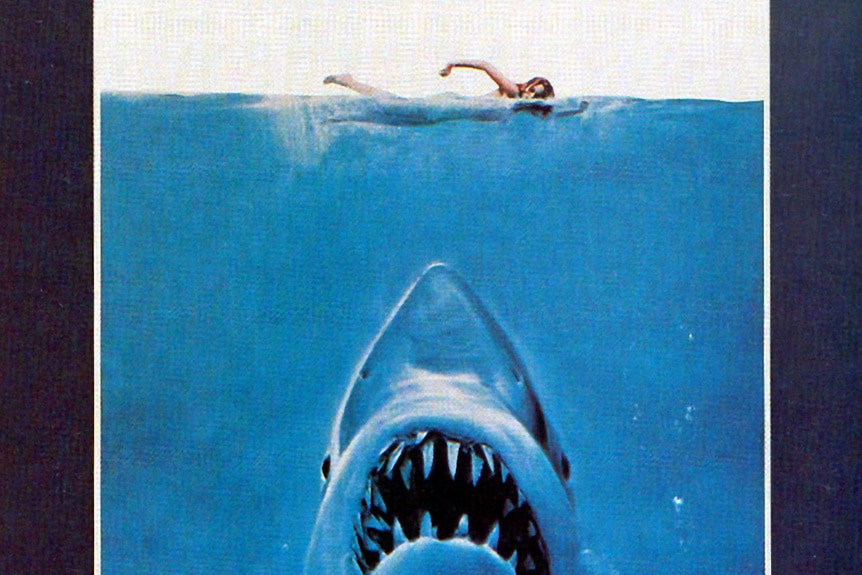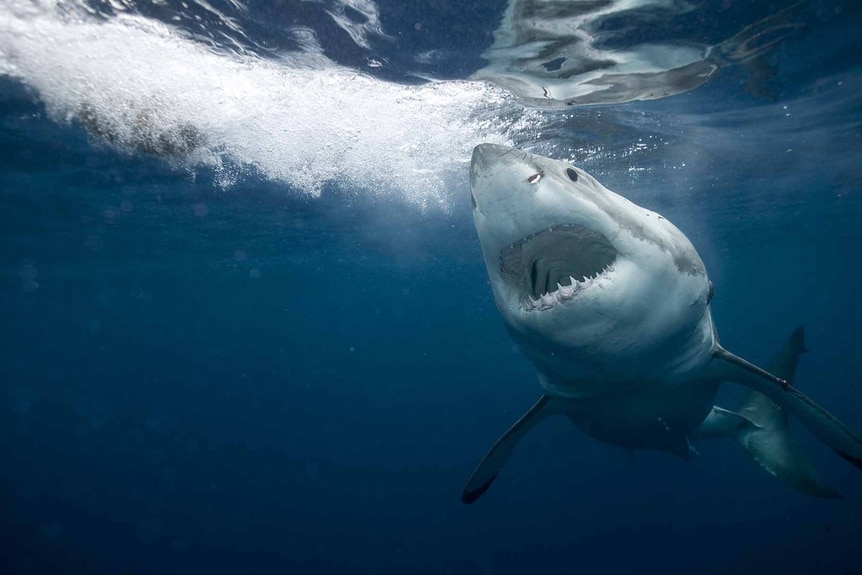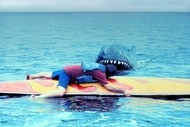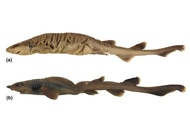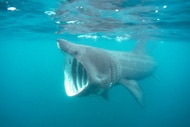Create a free profile to get unlimited access to exclusive videos, sweepstakes, and more!
How Do You Avoid a Shark Attack? The Answer Could Be... LED Lights?!
To avoid a shark attack you don't have to be invisible, you just have to look like "not food."
Dr. Laura Ryan and Professor Nathan Hart, researchers from Macquarie University in New South Wales, Australia, spent the last several years in Mossel Bay, South Africa, figuring out the best way to confuse sharks. The area is well known for dense seal populations and the white sharks who arrive to hunt them. Of course, white sharks are also known for attacking humans. They are responsible for the majority of all shark attacks, and researchers were hoping to figure out why, and use it against them. The results of that study were published in the journal Current Biology.
To do that, researchers endeavored to see the world through the eyes of a white shark, to understand what drives them to attack people, and find novel ways to prevent that from happening. The first thing they needed to do was understand what people look like to a shark on the prowl.
What the world looks like to a shark
Adult white sharks hunt seals as a primary source of food, and they’re pretty good at it. They wait in the deep, and look up for seals swimming overhead. Once they’ve identified a target, they attack from beneath, often bursting out of the water and into the air, the seal clenched in their deadly jaws. It’s been suggested that white sharks attack people because they confuse us for seals. It’s hard to know exactly how a shark perceives the world without being a shark, but research supports the confusion hypothesis.
In Steven Spielberg’s 1975 summer blockbuster Jaws, the opening shots are of the murky, deep ocean. Then we see a group of young people on the beach, hanging out around the fire, playing music, and generally fraternizing. It seems like an altogether pleasant evening until a couple of them peel off and head for the surf. The camera returns to the water and we see one of them from beneath, a dark silhouette against the moonlight, just a body moving through the water, all identifying features removed. This is the way a shark sees, just shadows against a stippled surface.
The construction of a shark’s eye is pretty similar to our own. They have a cornea, lens, retina, iris, and pupil just like we do, and inside their eyes you’ll find cones and rods. Unlike us, they have only one type of cone, and they likely don’t experience full color vision. To a shark, the world is one of contrast, of dark shapes moving against the light.
In addition to being color blind, sharks don’t see detail as well as we do. They are pretty good at detecting objects from far away, but they’re not very good at distinguishing those objects from one another. In a separate study, researchers filmed both seals and people swimming in the water, then modified those videos to reflect how a shark might perceive them. They found that to a shark, the two are almost indistinguishable, and inexperienced juvenile sharks might have a particularly hard time distinguishing between a seal, a person, a surfboard, or a kayak.
How LED lights could deter shark attacks
The silhouette is a primary visual cue for prey recognition in sharks. In the ocean, because light coming from above is necessarily brighter than light coming from below, even brightly colored objects appear as dark silhouettes when viewed from beneath. Some animals have evolved to camouflage themselves by emitting their own light through bioluminescence. This strategy is known as counterillumination and it’s particularly popular in midocean critters.
The new study achieved a similar effect using an array of LED lights strapped to the bottom of seal-shaped foam decoys. White sharks rely on the silhouette for prey detection and LED light strips disrupt the silhouette. To effectively camouflage, you don’t have to be invisible, you just have to look like “not food.” Figuring out the best way to do that meant putting a bunch of decoys in the water, each with a different LED light pattern on the bottom.
“There’s always a possibility that any stimulus you put in the water might attract a shark. So with our careful testing what we’ve done is found the optimum brightness which basically works like a counterillumination device, breaks up the silhouette of the board and seems to deter the sharks from approaching,” Hart said in a video statement.
Researchers focused their efforts on white sharks because they are responsible for the majority of attacks, but they are also interested in how other species of shark react to differences in light, and how non-shark species might use light to protect themselves. In terms of an actual light-based shark deterrent, researchers are now working on the next stage of prototypes which could be embedded in the bottom of a surfboard. With the right light pattern, it might finally be safe to go back in the water.
Jaws is available now from Universal Pictures.




